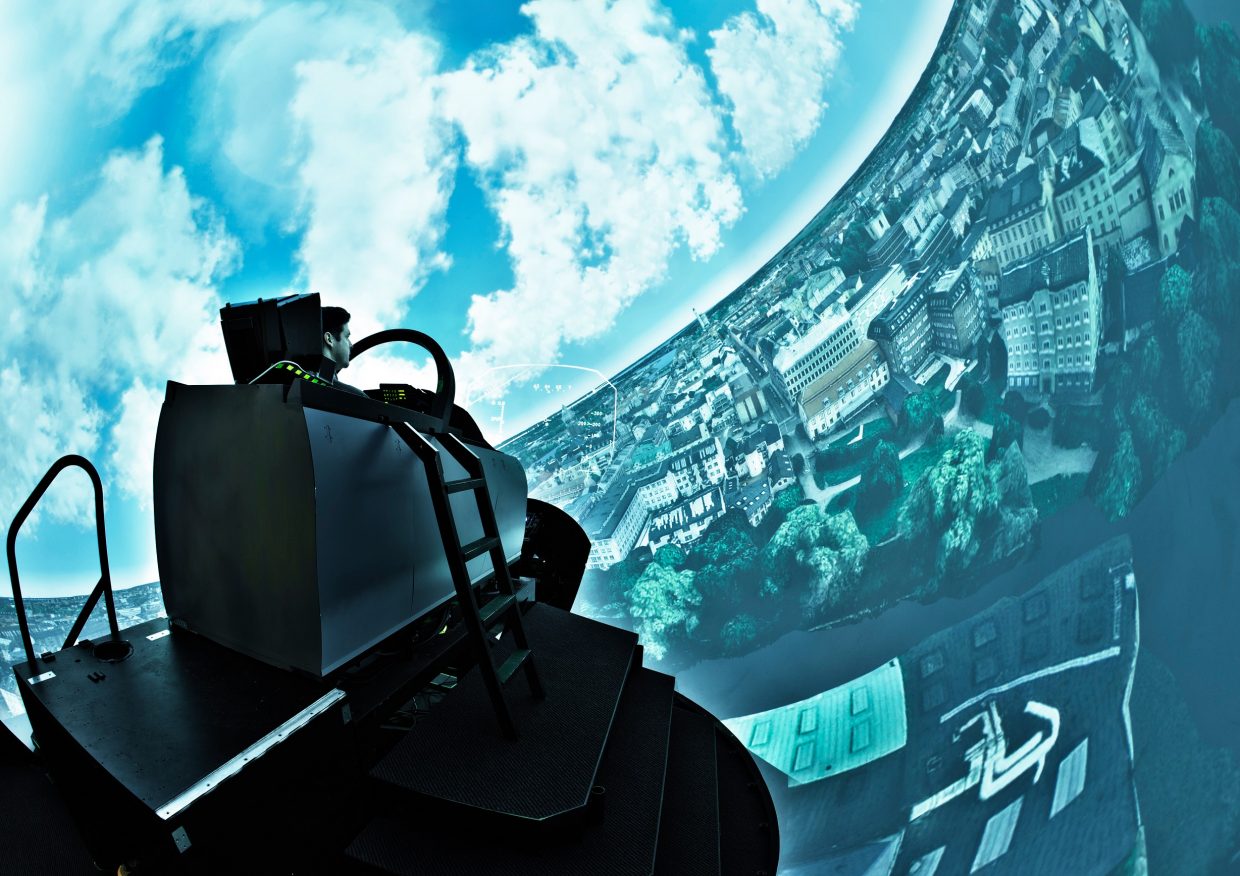Design of Simulation-Based Pilot Training Systems using Machine Learning Agents
The Aeronautical Journal June 2022 Vol 126 No 1300
The tactical systems and operational environment of modern fighter aircraft are becoming increasingly complex. Consequently, creating efficient and effective environments for training of pilots is challenging, especially when using only real aircraft. In a live setting, the high operational cost of aircraft, limited availability of air space and strict safety regulations impose constraints on the type of training scenarios that can be realised. Furthermore, when conducting training in the open, there is a risk that tactics and systems performance could be revealed. Instead, real aircraft, ground-based systems and soldiers (live simulation) can be integrated with manned simulators (virtual simulation) and fully computerised simulations (constructive simulation). Such a live, virtual, and constructive (LVC) simulation environment allows some pilots to operate real aircraft and experience important aspects of the physical world, eg the effects of g-forces when manoeuvring the aircraft, while other pilots participate in the same scenario in cost-efficient flight simulators. By using constructive simulation to augment the live and virtual aircraft operated by trainees, it is possible to improve training efficiency and effectiveness by simulating scenarios with a large number of participating entities while using a limited amount of human and physical resources. However, training value will depend on the quality of the behaviour models used to control the constructive entities.
Traditionally, behaviour models for constructive simulation have been built by hand. This is a challenging and time-consuming process, especially so for the end users of the training systems (eg instructors), who may not have the required expertise and experience. In recent years, advances in artificial intelligence (AI) and machine learning have made it possible for synthetic decision-making agents to learn how to solve complex tasks simply by interacting with their environment while trying to maximise a user-provided reward signal, which represents the goals of the agent. Reasoning about the goals of a synthetic agent may be more natural for an instructor, compared to explicitly programming the agent’s behaviour. In addition, it has been shown that machine learning approaches can produce behaviour that is more advanced. To achieve the best possible results, it is important to find a suitable design of the learning agents and their interface to the rest of the training system.

In this paper, we study learning agents from a user perspective, with support from experienced fighter pilots. The goal is to learn more about how intelligent agents could be used to automate some of the tasks performed by human training providers, such as instructors, role-players and scenario operators. First, we perform an analysis of the domain of simulation-based training. The purpose of the analysis is to identify constraints imposed on training providers when using different types of simulation resources, and to model the patterns of decision-making a synthetic agent must be capable of if it is to replace human role-players in air combat scenarios. Secondly, we conduct a user study consisting of repeated interviews and a written survey, with the purpose of finding out what experienced pilots consider important agent capabilities and characteristics in different types of simulation-based training scenarios. Thirdly, we conduct a study of human-agent interaction in an air combat scenario, where agents trained with a state of the art machine learning algorithm cooperate with humans to solve an air policing task. The purpose of the experiment is to study how aspects of the agent design affects the agent’s performance. Finally, we discuss design approaches and solution concepts within the context of a system architecture for a simulation-based training system that incorporates learning agents. The purpose is to provide a breakdown of the problem into smaller sub-problems, and provide framing for future research efforts.
Based on our findings we believe that artificial intelligence is providing great opportunities for improvement of training efficiency and effectiveness. While our focus in this paper is on military training and adaptation of friendly or hostile synthetic pilots’ behaviour to match trainees current training needs, many of the discussed concepts have broader applicability. For instance, they could be used for training simulations of other sorts, including training of pilots for civilian flight, where agents could help realise dense air traffic and patterns of life, automated setting of adversarial weather conditions and malfunctions, as well as automated evaluation and profiling of trainees.
This open access research paper appears in the June 2022 (Vol 126, No 1300) edition of The Aeronautical Journal. This journal is the world’s oldest aerospace publication currently in production and has been published by the Royal Aeronautical Society since 1897.
The Royal Aeronautical Society is the world’s only professional body dedicated to the entire aerospace community. Established in 1866 to further the art, science and engineering of aeronautics, the Society has been at the forefront of developments ever since.
www.aerosociety.com
National Aerospace Library catalogue & e-books
Book reviews covering academic, scientific and technical books covering aeronautical engineering and topics relating to it can be found here.
www.aerosociety.com/news-expertise/national-aerospace-library/book-reviews






